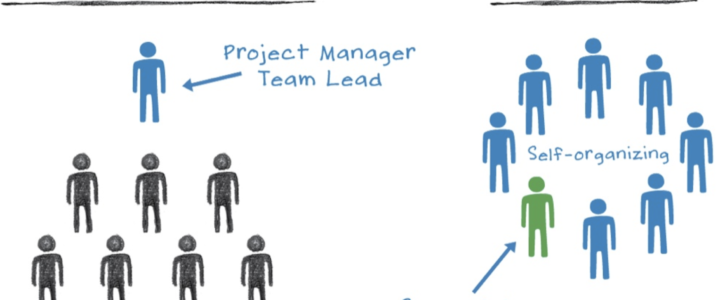from agile leadership principles & practices, university of maryland
“Leadership is the art of getting someone else to do something you want done because he wants to do it.” Dwight D. Eisenhower
Born in the IT arena, the Agile method is expanding to all business as it has proven its effectiveness in unpredictable and rapidly changing worlds. Agile is a living system which is based on three main criteria : speed, scope and trust. Speed is the ultimate goal, and it prevails over predictability and innovation, Scope becomes adjustable, while budget and schedule are fixed. The choice of partners is based on trust, efficiency and expertise are secondary.
Agile Leadership is process-defined. The Agile Leader starts by creating the right work environment, in turn leading to ultra high performance, according to two beliefs : (1) the happier the team, that faster it will perform and (2) a well functioning team is much faster than the best individual. He sets a direction and facilitates the circulation of information, then he serves the team members (servant leadership). Regular flow is the key work.
The Agile Leader is a referent for his team, a sort of preferred teacher. Trust best describes the relationship between the leader and the team. As a servant he has long term vision, the capacity to implement the right processes that will lead to the best results, and the conviction that developing his team members is key to success. He also has the capacity to continuously solve all arising problems.
The team members are empowered, they own the result of the work and will be held accountable for it. Their motivation is intrinsic, in the sense that they love what they do (and would do it even if they were not paid to do it) and they work in an environment that suits them fully.
The Agile Leader has very strong emotional – social intelligence (self-awareness, social awareness and self management skills). He is very mindful (the capacity to know what is going on without getting carried away) and is very capable of focusing (effectively deal with distractions).
The Agile Leader keeps the customer needs in mind at all times. He seeks simplicity (knows how to de-scope, know what not to do). He continuously takes into account the customer’s evolving needs and delivers timely and budget set products.


